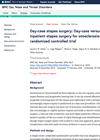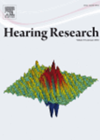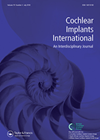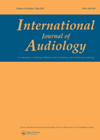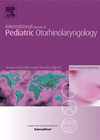
Journal Reviews
Day care stapes surgery
This paper reports on a proposed unblinded, randomised controlled trial in which the hearing outcomes after inpatient stapes surgery will be compared with those after day case stapes surgery. The study is currently in the recruitment stage and plans to...
Otolith dysfunction in congenitally deaf adults
This paper helps to further define the profile of ocular and cervical vestibular-evoked myogenic potentials (o and c VEMPs) in patients with congenital profound sensorineural hearing loss (PSHL). It highlights the prevalence of otolith (saccular and utricular) dysfunction that exists...
How do the rejected candidates for cochlear implantation feel?
This interesting study from the UK explored, using personal interviews, how rejected candidates for cochlear implantation feel and deal with the decision not to implant. The authors assessed 10 adult cochlear implant candidates who had undergone the evaluation process were...
Hearing protection and hearing loss
This study examined the interaction of hearing protection for noise reduction and hearing loss with speech recognition performance. Forty five subjects with four hearing loss profiles were fitted with two different level dependent hearing protectors (circumaural and inserts) in two...
BAHA stability measurement in children
This useful paper reports the experience of using resonance frequency analysis for single stage bone-conduction implants in a paediatric population. A smartpegTM is attached to the abutment and vibrated by a close quarters magnetic field. The amount of vibration is...

